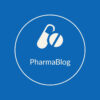SOP for Microbial Limit Test | Microbial Limit Test as per Indian Pharmacopoeia | Microbial Limit Test Procedure for Raw Materials |
- Microbial Limit Test for Raw Material SOP covers below points:
- Raw Material Sample Preparation for Microbial Limit Test
- Total aerobic microbial count (TAMC) procedure
- total yeast and mould count (TYMC) procedure
- Observation and interpretation
- specified pathogens procedure
- Escherichia coli pathogen test procedure
- Salmonella aboney pathogen test procedure
- Pseudomonas aeruginosa pathogen test procedure
- Staphylococcus aureus pathogen test procedure
- Microbial Limit Test format for raw material
1.0 OBJECTIVE :
- To describe procedure for microbial limit testing of Specified Raw Materials to determine the microbial load and confirm the absence of specified pathogens.
2.0 SCOPE :
- This procedure applies to Microbiological analysis of specified raw materials.
3.0 RESPONSIBILITY :
- Microbiologist
4.0 ACCOUNTABILITY:
- Head of Department
5.0 PROCEDURE :
5.1 Sample Preparation: A
- Dissolve 10 gm or dilute 10 ml of the preparation under examination in 90 ml sterile SCDM broth, mix well and keep in incubator for incubation at 30°C to 35°C for 18 to 24 hours.
5.2 Sample Preparation: B
- Dissolve 10 gm or 10 ml of the preparation under examination in 100 ml sterile SCDM broth, mix well and keep in incubator for incubation at 30°C to 35°C for 18 to 24 hours.
5.3 FOR TOTAL AEROBIC MICROBIAL COUNT (TAMC):
- Take 1.0 ml of prepared sample A in two sterile petri plate before incubation and pour the 15 to 20 ml of Soybean Casein Digest Agar (SCDA) having temperature of about 450C.
- Mix the contents of petri plates by gently swirling the plate to proper mixing of sample. Allow the plate to solidify at room temperature and keep in incubator for incubation at 30°C to 35°C for 5 days in inverted position.
5.4 FOR TOTAL YEAST AND MOULD COUNT (TYMC) :
- Take 1.0 ml of prepared sample A in two sterile petri plate before incubation and pour 15 to 20 ml of Sabouraud Chloramphenicol Agar (SCA) having temperature of about 450C.
- Mix the contents of petri plates by gently swirling the plate to proper mixing of sample, allow the plate to solidify at room temperature and keep in incubator for incubation at 20°C to 25°C for 5 days in inverted position.
5.5 OBSERVATIONS :
- After completion of incubation period observe the plate under colony counter and express the result as colony forming unit (CFU) per gm/ml, by multiplying average number of CFU/pate with dilution factor. The dilution factor is 10.
5.6 INTERPRETATION OF THE RESULT FOR TAMC AND TYMC :
- If no colonies observed express the result as number of colonies less than dilution factor (<10 cfu/gm/ml).
- If colony of fungi are detected on SCDA, they are counted as part of TAMC and if colonies of bacteria are detected on SCA/SDA they are counted as part of TYMC.
5.7 TESTS FOR SPECIFIED PATHOGENS :
- Test for Escherichia coli:
- After incubation of sample A, shake the broth and transfer 0.1 ml to 10 ml of Macconkeys broth, and incubate at 42°C to 44°C for 24 to 48 hours.
- Take a loopful sample from Macconkeys broth and strick on Macconkeys agar plate and incubate at 30°C to 35°C for 18 to 72 hours.
- Growth of pink, non mucoid colonies, indicates the presences of Escherichia coli.
- If there is no growth of such type of colonies, or the identification tests are negative, it indicates absence of E. coli and the sample passes the test.
- Test for Salmonella aboney:
- After incubation of sample B and transfer 0.1 ml of to 10 ml of RVSE broth and incubate at 30°C to 35°C for 24 to 48 hours.
- Take a loopful sample from RVSE broth and strick on XLDA plate and incubate at 30°C to 35°C for 24 to 48 hours.
- Well developed, red colonies with or without black centers indicates the presences of Salmonella aboney.
- If there is no growth of such type of colonies, or the identification tests are negative it indicates absence of Salmonella aboney and the sample passes the test.
- Test for Pseudomonas aeruginosa :
- After incubation of sample A, take a loopful sample and strick on Cetrimide agar plate and incubate at 30°C to 35°C for 18 to 72 hours.
- A greenish colony indicates the possibility of presences of Pseudomonas aeruginosa.
- If there is no growth of such type of colonies, or the identification tests are negative it indicates absence of Pseudomonas aeruginosa and the sample passes the test.
- Test for Staphylococcus aureus:
- After incubation of sample A, take a loopful sample and strick on Mannitol salt agar plate and incubate at 30°C to 35°C for 18 to 72 hours.
- Yellow or white colonies with yellow zone indicates the possibility of presences of Staphylococcus aureus.
- If there is no growth of such type of colonies, or the identification tests are negative it indicates absence of Staphylococcus aureus and the sample passes the test.
5.8 LIMITS :
- As per individual material specifications.
6.0 ABBREVIATIONS:
| Abbreviation | Expanded form |
| SCDM | Soyabean Casein Digest Medium |
| SCDA | Soyabean Casein Digest Agar |
| SCA | Sabouraud Chloramphenicol Agar |
| RVSE | Rappaport Vassiliadis Salmonella Enrichment Broth |
| XLDA | Xylose Lysine Deoxycholate Agar |
| MLT | Microbial Limit Test |
| cfu | Colony Forming Unit |
| gm | Gram |
| NMT | Not More Than |
| ml | Milliliter |
| °C | Degree Celsius |
| QC | Quality Control |
7.0 ANNEXURES:
| Annex. No. | Title |
| 01 | Microbial Limit Test for Raw materials |
8.0 SOP REFERENCES
- Indian Pharmacopoeia & British Pharmacopoeia.
END OF THE SOP
ANNEXURES :
Annex. No. 01 Microbial Limit Test for Raw materials

